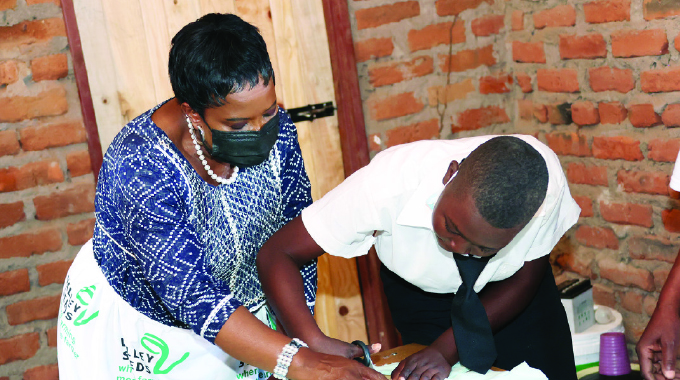Zim improves on health

Health Reporter
Zimbabwe has over the past decade managed to implement strategies that have contributed to an improved universal health coverage in line with the United Nations Sustainable Development Goals.
According to a World Health Organisation report titled “Tracking Universal Health Coverage in the WHO African Region, 2022,” most countries in the African region have managed to expand service coverage through the alignment of their development agendas with the attainment of the SDGs and implementing policy shifts needed for a people-centred approach to universal health coverage.
Universal health coverage (UHC) represents the umbrella target for SDG 3 and seeks to ensure that all people have accessible, affordable and quality health provision, regardless of their economic status, gender or other characteristics
The WHO uses two indicators to monitor progress towards UHC; the service coverage index (SCI) and the financial risk protection.
The UHC SCI is constructed from 14 indicators, measuring coverage of essential health services using four components that include reproductive, maternal, newborn, and child health, infectious diseases, non-communicable diseases (NCDs) and service capacity and access.
According to the report, which is based on results from the period 2016 to 2019 from member states, UHC SCI ranged from 28 to 75, with seven out of the 47 countries recording high service coverage (index of 60 and above), 29 had a service coverage index value of between 40 and 59, and 12 had low coverage (index between 20 and 39). Zimbabwe was in the 48 to 55 range.
“Regarding the four UHC SCI subcomponents, the infectious disease sub-index improved the fastest between 2000 and 2019 (from 6 to 48) with a pronounced acceleration around 2005 due to the rapid scale-up of HIV, tuberculosis and malaria services. The RMNCH sub-index also witnessed significant progress, increasing from 42 to 57 over the same period. The non-communicable diseases component of the SCI remained the slowest to progress. This can be attributed to the ongoing epidemiological transition in the Region, where NCD services are becoming increasingly important, given the rise in chronic diseases, with the extent of NCD coverage more critical now than in the past,” read the report.
Among the key activities implemented across the health system pillar areas to facilitate attainment of UHC, Zimbabwe carried out its health labour market analysis (HLMA) focusing on specialist doctors, nurses, pharmacists and laboratory scientists to guide projection of specialist needs for training. This was done to understand the health workforce context, demand and supply factors, so as to inform the health strategy review policy. The country also revived its Human Resource for Health Task Force and its subcommittees.
Although the country has been faced with a severe shortage of health workers due to the mass movement to other countries, there have been efforts to address the issue.
“The Zimbabwe Health Services Board developed a specialists’ need-based plan based on a gap analysis and training needs assessment to inform the development of national training needs. The study findings are now guiding the projection of specialist needs for training,” the report said.
There has also been a deliberate move by the Ministry of Health and Child care to improve the use of ICT in health delivery. The country received support to purchase ICT equipment for the innovation hub in health informatics and data analytics, monitoring and evaluation, and the health information systems department in the Ministry.
In terms of strengthening leadership and management skills, Zimbabwe launched the National Health Strategy 2020–2025, which was then aligned to the Health sector monitoring and evaluation plan and policy.
To facilitate the implementation of the NHS, the Ministry of Health identified ten strategic focus areas for the health sector that were expected to guide the strategy and direct health investments.
There has since been significant progress reported in attaining the desired key outcomes. Government prioritised infrastructure development, along with improved access to essential medicines, improved health sector human resources performance, reduced morbidity and mortality due to communicable and non-communicable diseases as well as improved governance of the health services were among the key outcomes enunciated in the country’s National Development Strategy.
However, the Covid-19 pandemic disrupted the delivery of essential health services in all countries.
“The pandemic has exposed numerous vulnerabilities in the health systems of the region, including disparities in service coverage between the rich and the poor, and gaps in social protection. It has also showed that health security and attainment of universal health coverage are inseparable aspirations and consequently, efforts to achieve these must go hand in hand, while building resilient populations,” said WHO Africa regional director Dr Matshidiso Moeti.
.











Comments